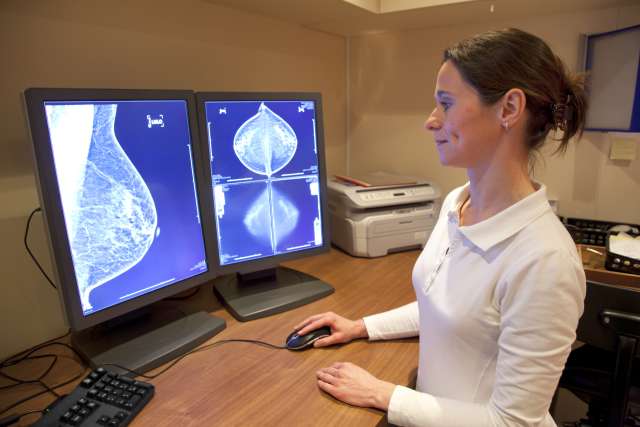Long-term research initiated at the UCLA Jonsson Comprehensive Cancer Center on techniques used for detecting the earliest spread of melanoma (the deadliest form of skin cancer) has confirmed that these new methods can significantly prolong patients’ disease-free survival over traditional techniques.
The research also affirms a new standard for detecting the spread of melanoma to the lymph nodes by allowing doctors to quickly determine which patients may benefit from having their lymph nodes removed, while sparing the surgery (and its associated complications and cost) for patients who it cannot benefit.
The study was led by the late Dr. Donald L. Morton, former UCLA professor of surgery and director of the John Wayne Cancer Institute in Santa Monica and Dr. Alistair J. Cochran, professor in the departments of surgery and pathology and laboratory medicine at the David Geffen School of Medicine at UCLA. It was published February 13, 2014 in the New England Journal of Medicine.
Before cancer cells spread (a process called metastasis) throughout the lymph nodes, they track through the lymphatic system, first entering the lymph node most directly connected to the tumor (called the sentinel lymph node). A mixture of blue dye and radioactive tracer is injected into the tissues around the primary tumor to find the lymphatic channels that lead to the first tumor-draining lymph node. The dye–isotope mixture follows the same lymphatic path used by the melanoma cells to spread to the sentinel node. The sentinel node is removed and minutely examined by microscopy, using sensitive probes that can detect even single melanoma cells.
If tumor cells are not found in the sentinel node it is highly unlikely that there will be tumor in other non-sentinel nodes and further nodal surgery is considered unnecessary. If cancer cells are found in the sentinel node, all other lymph nodes in the nodal group are immediately removed.
Morton and Cochran's research evaluated outcomes of 2,001 melanoma patients at 10 years of follow-up. The results confirm that lymphatic mapping and sentinel-node biopsy represent an advantageous change in practice for doctors treating melanoma patients.
One important long-term finding of the study was that the thickness of the initial melanoma tumor relates to the effectiveness of these treatments in managing nodal and other metastases. Patients with primary melanoma tumors of intermediate thickness (1.20 to 3.5 millimeters) who had sentinel-node biopsies with immediate complete removal of the lymph nodes (if the sentinel node contained cancer cells) had an overall disease-free survival of 71.3 percent compared with 64.7 percent for those whose nodes were observed without sentinel biopsy.
The research also found that sentinel-node biopsy prolonged distant disease-free survival (survival without disease spread to distant organs such as brain, lungs, or liver) and melanoma-specific survival (survival without development of additional metastases) for patients with lymph node metastasis from primary melanomas of intermediate thickness.
Of the patients with melanoma, 20 percent had the disease spread to nearby (regional) lymph nodes at initial diagnosis. Traditional treatment of these patients was surgical removal of the primary tumor and a rim of “normal” tissue around it, then observation of the lymph nodes. If the nodes developed signs of metastasis over time they were then surgically removed. This spared 80 percent of patients unnecessary surgery, but was possibly too late to stop disease spread in the 20 percent who had metastasis.
The alternative treatment was to remove all patients’ lymph nodes, since every patient was potentially at risk of metastasis, which would subject 80 percent of patients to unnecessary surgery and its considerable complications. Drs. Morton and Cochran and their colleagues in the division of surgical oncology (later the John Wayne Cancer Clinic) at UCLA sought and eventually perfected a method to specifically identify the 20 percent of patients whose tumors had already spread to the lymph nodes.
“Ever since the advantages of lymphatic mapping and sentinel-node biopsy were recognized by the cancer treatment community, the technique has become widely used and is viewed as a practice-changing development,” Cochran said. “That is very gratifying for all who worked on developing and testing the approach at UCLA and the John Wayne Cancer Clinic and in centers around the world.”
These study results confirm that for patients with intermediate thickness melanomas, early sentinel biopsy decreases the risk of cancer recurring in the lymph nodes, and decreases patients’ chances of dying from the disease. Although some patients with thick primary tumors benefit from having their lymph nodes removed, the findings suggest that the timing of the intervention is not as crucial for them as it is for patients with intermediate thickness primary tumors. Not enough patients with thin melanomas were in this trial to permit conclusions on their benefit from the technique, thus the effect of lymphatic mapping and sentinel-node biopsy in managing patients with thin primary melanomas remains for later study.
This research was supported by the National Cancer Institute of the National Institutes of Health and the Australian and New Zealand Melanoma Trials Group.



